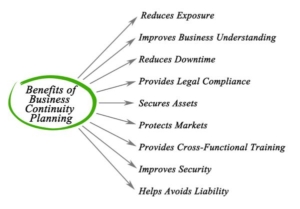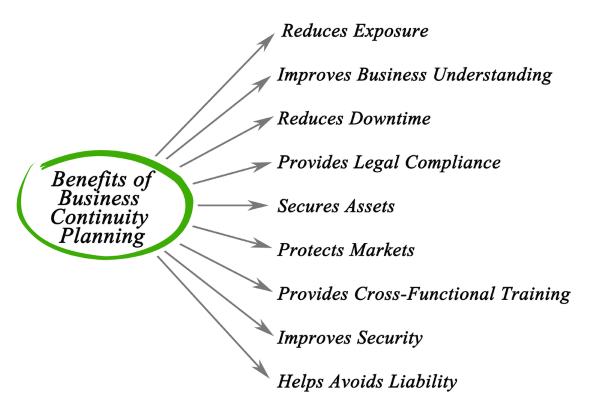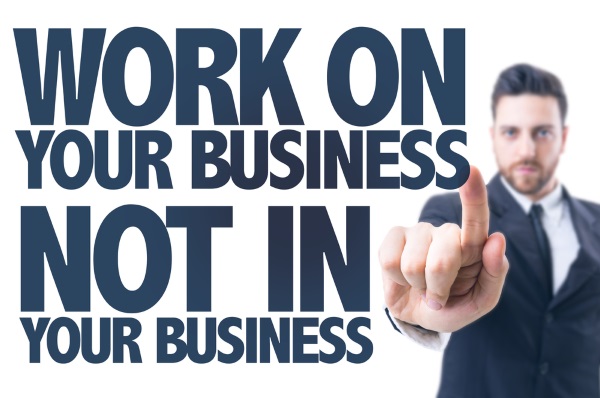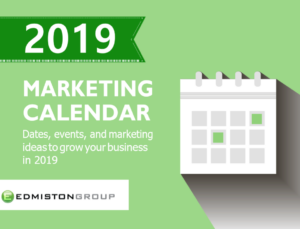
Are you preparing for the future? Is a Business Continuity Plan a part of your company’s growth? If your business had a disaster, could you be up and running within hours, days, weeks, months, or never recover?
A Business Continuity Plan (BCP) is a proactive plan to avoid and mitigate risks associated with a disruption of operations. It details steps to be taken before, during and after an event to maintain the financial viability of an organization. Disaster Recovery Plan (DRP) is a reactive plan for responding after an event. This plan should provide guidelines for emergency responses, extended back-up operations, and post-disaster recovery.
There are many components to a BCP to be considered and here are some key pieces to the plan.
Personnel is your company’s greatest asset and one of the first things to consider. If disaster has struck – has there been loss of life? Has a key member of your management staff had a crisis? Did you have an active shooter situation at your place of business? How are the staff coming together following a crisis? Do they have the proper training to know what to do in the event of a disaster? As a leader having a plan is critical. Your staff looks to you for guidance on what happens next. They can remain calm and execute a plan if a plan exists and they are properly trained.
Communication – how will staff, vendors and the company as a whole communicate if all phone lines are down? What is your plan if you have no email access? Do you have a phone chain or text message chain established?
Technology – is your information in the cloud or is there a secondary data center outside of your building? How will staff access email and critical information to keep your company running? This includes A/R and A/P, proposals, proprietary information, etc. Who can access what information?
Facilities – have you made arrangements for housing of key personnel and employees if necessary? Taking care of your employees and their families will help them remain calm, committed to business recovery and ultimately create loyalty to you as the business owner. If your building was destroyed – do you have a backup location in mind or will staff be able to work remotely?
Have you set up electronic payment systems to continue to send and receive payments? Will you need to resort to manual operations? If so – what might that look like?
Different than a BCP, a Disaster Recovery Plan (DRP) is a documented process or set of procedures to recover and protect a business IT infrastructure and other operations necessary to run your business in the event of a disaster. Such a plan, ordinarily documented in written form, specifies procedures an organization is to follow in the event of a disaster.
The City of Baltimore has made national news recently regarding their vulnerability in regard to a cyber-attack, but businesses and government should also consider other types of risk such as fires and flooding that could affect their day to day operations.
As we have recently seen of the floods and hurricanes in various parts of the country, in Western Pennsylvania we think we are safe from disaster. That couldn’t be farther from the truth. Every day there are new stories of flooding, burst pipes, fires, landslides, hacking, tech outages, downtime, and data loss – even at the best of companies. Are you prepared to do business if today you walked into work and there had been an electrical surge that fried all your computers?
No matter what the cause of the disaster, the organizations that manage them most effectively, and with the least amount of collateral damage, are those with a strategic Business Continuity Plan and a comprehensive, easy-to-follow, and regularly tested Disaster Recovery Plan.
No one wants to think gloom and doom, but I hope these questions will offer food for thought as you look to put together a program for Business Continuity and Disaster Recovery testing. Execution of a best thought out plan will ensure your business can remain “Open for Business” should disaster strike.
About the author: Autumn Edmiston is the CEO and owner of the Edmiston Group. The Edmiston Group is a multifaceted Pittsburgh based marketing consulting firm providing senior-level marketing management services to businesses and non-profit organizations on a short or long-term basis. Core areas of service are business development strategies, website creation and management, social media management, marketing, strategic planning, and public relations. The Edmiston Group has consistently delivered and implemented real-world, proven business marketing ideas and strategies for business.




 If you’re good at what you do, you will have no problem keeping customers happy and coming back to use your services time and time again. But it’s getting the word out there to obtain those customers in the first place that can be challenging.
If you’re good at what you do, you will have no problem keeping customers happy and coming back to use your services time and time again. But it’s getting the word out there to obtain those customers in the first place that can be challenging.


 Now that you’ve started your business are you ready to take your small business to the next level? As a small business owner, you wear a lot of hats. Things such as scheduling employees, managing finances, creating marketing campaign – you name it! It’s hard work, but setting up processes can make a big difference. It allows others to step in and execute a particular task as you grow.
Now that you’ve started your business are you ready to take your small business to the next level? As a small business owner, you wear a lot of hats. Things such as scheduling employees, managing finances, creating marketing campaign – you name it! It’s hard work, but setting up processes can make a big difference. It allows others to step in and execute a particular task as you grow.
 There is a direct correlation between happy employees and happy customers. Employers are starting to recognize that keeping their employees happy and fulfilled at work means getting a little creative.
There is a direct correlation between happy employees and happy customers. Employers are starting to recognize that keeping their employees happy and fulfilled at work means getting a little creative.
 It’s time to scale your business but you’re not sure how. As a business owner, you may be working 6-7 days a week, wearing numerous hats, and are like a hamster running on a spinning wheel. The key here is you’re too busy working IN your business to take the time and work ON your business. The first quarter of 2019 is nearly over. Are you on target? Here are some tips for taking your business to another level.
It’s time to scale your business but you’re not sure how. As a business owner, you may be working 6-7 days a week, wearing numerous hats, and are like a hamster running on a spinning wheel. The key here is you’re too busy working IN your business to take the time and work ON your business. The first quarter of 2019 is nearly over. Are you on target? Here are some tips for taking your business to another level.


 Emotions drive most of our decisions, and that includes what we purchase. Think about it – when you attend a trade show the smell of freshly baked cookies or popcorn will draw you into an exhibitor’s booth.
Emotions drive most of our decisions, and that includes what we purchase. Think about it – when you attend a trade show the smell of freshly baked cookies or popcorn will draw you into an exhibitor’s booth.
 Are you helping your customers or selling? When you remember what your customers’ needs are and offer a solution to those needs, you’ll stand apart from the competition. By helping through offering insights and resources you take on a more humanistic approach in how you’re assisting your customers.
Are you helping your customers or selling? When you remember what your customers’ needs are and offer a solution to those needs, you’ll stand apart from the competition. By helping through offering insights and resources you take on a more humanistic approach in how you’re assisting your customers.
 Creating a marketing calendar (editorial calendar) is critical to your success and will be the cornerstone of the activities you will do to promote your business in 2019. It is simply the act of thinking through the year and putting a plan in place. You can make the calendar as simple or as complex as you like. Additionally, we recommend taking some time to create a social media calendar as well. The Edmiston Group creates a general calendar every year, but we also customize these calendars for particular businesses allowing them to easily execute.
Creating a marketing calendar (editorial calendar) is critical to your success and will be the cornerstone of the activities you will do to promote your business in 2019. It is simply the act of thinking through the year and putting a plan in place. You can make the calendar as simple or as complex as you like. Additionally, we recommend taking some time to create a social media calendar as well. The Edmiston Group creates a general calendar every year, but we also customize these calendars for particular businesses allowing them to easily execute.